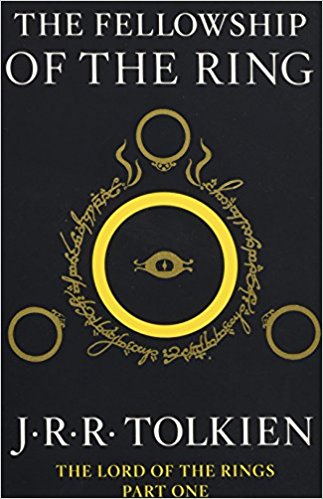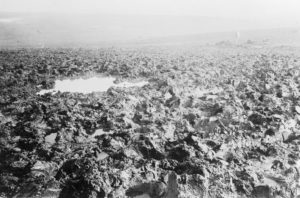 One of the recurring themes of my adult life has been my getting the itch to go back and take a look at some book or movie or album that I loved when I was younger but haven’t re-engaged with for a while. The vast majority of the time, I walk away from the revisit shaking my head and telling myself that hey, it’s no crime to have liked something bad or silly when you were younger.
One of the recurring themes of my adult life has been my getting the itch to go back and take a look at some book or movie or album that I loved when I was younger but haven’t re-engaged with for a while. The vast majority of the time, I walk away from the revisit shaking my head and telling myself that hey, it’s no crime to have liked something bad or silly when you were younger.
So, recently I got the revisit urge for Lord of the Rings. I was pretty sure I knew how this was going to play out; I hadn’t read Tolkien since 2002, and I did vaguely remember not digging it at the last go-round. Which had been a bummer- these were foundational books to me in the 80s and 90s, but my turn-of-the-century reaction had been that the books were humorless, and trite, and just generally kind of bad.
A few things have happened to me since 2002, though. Big-picture, I’ve lived an adult life, with attendant ups and downs. More directly relevant, I’ve gained a historical consciousness, reading a ton of history (both cultural and political) and particularly boning up on World Wars 1 and 2.
And that’s the key. While I think there’s a lot of valid criticism that can be aimed at Lord of the Rings, I absolutely loved it on this reread, and a great deal of that love is based on my fascination with the way that Tolkien’s experience in World War 1 is smeared onto every page of the book (even beyond the physical descriptions of places around Mordor sounding almost word-for-word like descriptions of Western Front battlefields). Tolkien was at the Somme, arguably the most disastrous and harrowing British military experience of the 20th century. As he points out in the preface to The Fellowship of the Ring, by 1919, most of his close friends were dead. British tactics at the Somme were, essentially, to hop up out of somewhat-safe trenches in waves, charging into a maze of barbed wire covered by German machine guns. You’d watch the wave ahead of yours go over the top and get cut to pieces. And then the officers would blow their whistles and your wave would go. Tolkien survived the war because a serious illness brought on by lice bites took him off of the firing line. But he saw a lot of people he knew die. And, as a junior officer in WW1 infantry, he was trained to order men to immediate, useless deaths and display leadership by joining them.

The dominant mood in that situation would have to have been one of proceeding without hope. People expected to die; they watched their friends die and knew that their turn was coming soon. And this same mood pervades The Lord of the Rings; I’d argue it’s the book’s (Tolkien conceived of it as one book; the split into three volumes reflected 1950s publishing logistics) dominant mode. Consider Aragorn sighing and saying that the fellowship had no hope after Gandalf died, but would proceed without it. Or, for that matter, Aragorn’s consistent position of grimly doing his duty without hope. Consider the separate bits where Eomer, Eowyn, Merry, and Pippin all separately look forward to battles that are about to happen and think explicitly about how they are about to die. Consider pretty much every word of Frodo’s dialogue in The Two Towers and Return of the King.
I don’t know. As an adult who’s experienced some loss, and know what it’s like to feel like you have something to lose, I find it touching to read a book that’s basically an extended meditation on how to keep functioning in the face of loss. Honestly, on this reread, I’m less interested in the high fantasy stuff than I am with the bits where Tolkien’s obvious lifelong struggle to figure out what the fuck it was all about shows through.
Along the same lines, I think it’s fascinating that Tolkien the Great War veteran was writing this book during and shortly after World War 2 and that this reality also pokes its way into the subtext all over the place. The text makes it really clear that after the last victorious war against Sauron, there was a really strong “NEVER AGAIN!” resolution among pretty much all the survivors. So you see all of this physical infrastructure built to make sure that this kind of ruinous war never happens again. Most notably, all of the towers and fortresses around Mordor, designed to keep an eye on the place. As the backstory is doled out, we see that people kept their resolve for quite a while, and then slowly kind of drifted away as the events faded into memory, and all of the infrastructure meant to prevent the next war got co-opted. Eventually those gates and towers became Mordor’s fortifications.
When you’ve got a man deeply scarred by World War 1 writing during World War 2, the applicability of this situation is pretty self-evident. And honestly, one of the things that keeps me up at night is the fact that, worldwide, societies seem to be losing the memory and resolution that major wars are really, really bad.
A few other, smaller thoughts:
– There’s no way this book would be published like this now; one thing that shines through bright as day is that Tolkien wasn’t working with a modern editor. I’m 100% positive that a modern editor would have cut the entire Bombadil section; leaned on Tolkien to make Arwen more visible in the book, to make more clear the dramatic stakes of her and Aragorn’s relationship (this is a thing I think the Jackson adaptations did a decent job of); moderated the tone a bit so that you didn’t have in the same book a wild veer from light comedy about bumpkins at a birthday party to an army catapulting mutilated severed heads into a city; fixed some continuity errors like Aragorn running around with an unsheathed sword for at least a week; and, most of all, drastically cut or reshaped the appendices.
– Denethor doesn’t get enough credit for being an extremely Metal character. Dude is by far the most Metal character in a book/series full of moments and characters that would be right at home on any era of Black Sabbath album covers. How Metal is Denethor? He dresses in long hair and robes. He takes absolutely no shit from anyone. He sasses unbelievably powerful wizards who get on his nerves. He, in the end, goes out Full Goth on a pyre in a tombyard. He’s so metal that afterwards, his palantir only shows a burning pair of hands. You fucking *know* those hands are making devil horns.
-About those appendices: it’s amazing how fast you get into diminishing returns with them. First, side stories that add background. Great, although a lot of this should have just been in the main text. Then, a chronology that shows how all the timelines interacted and what happens next. Awesome! Then, calendar conversions? OK. How metafictional. Then a journey out into the metafictional weeds of imagined translations of invented languages where we learn that everything we just read was a translated lie and Sam Gamgee’s actual name was Ran Galspi and yeah, ok, I can kind of admire the Borgesian effort here, but come on, man.
-Quick thought about The Hobbit, which I reread after LotR: it’s interesting to me how many textual problems in The Hobbit are solved by the conceit that the text was written by Bilbo himself. Geography and countryside don’t line up exactly with LotR? Bilbo’s an unreliable narrator and kind of a Shire provinicial! Gandalf’s powers and capabilities vary widely between Hobbit and LotR? he was intentionally holding back so Bilbo/Thorin/dwarves could learn and grow, and also Bilbo’s a bad observer! Prose in Hobbit is simplistic and kind of silly? Bilbo’s no hobbit of letters! Tolkien leaned into this pretty hard when he rewrote the Gollum chapter to accommodate LotR and then in an author’s note blamed the change on Bilbo lying under the influence of the ring.
– It’s (mercifully) not in the text, but based on the on-page presentations of Tom Bombadil and Goldberry, there is pretty much no way that Tom Bombadillo doesn’t spend hours singing about fucking by the riverside under old man willow. Ho!
Great rundown. The concept of Tolkien writing about a metal character is phenomenal.
Just realized that this was hanging in the approval queue- thanks a ton, man!